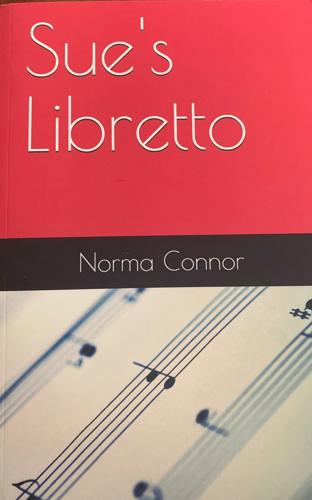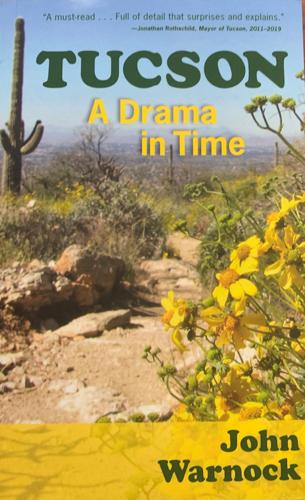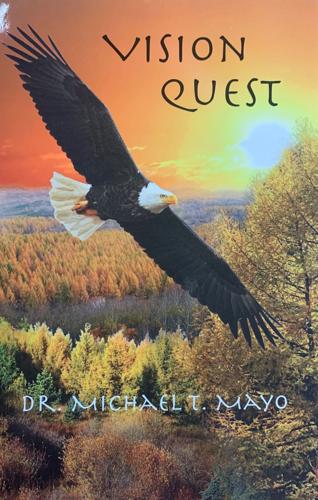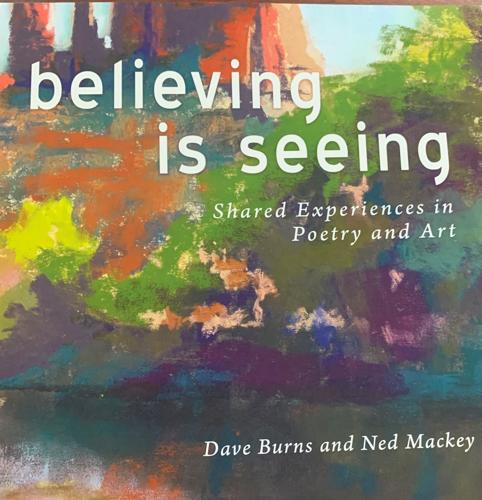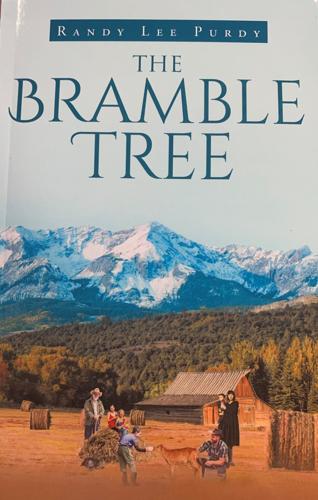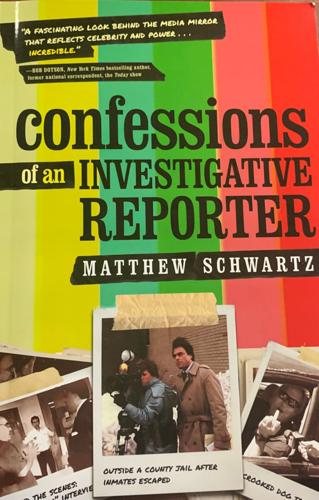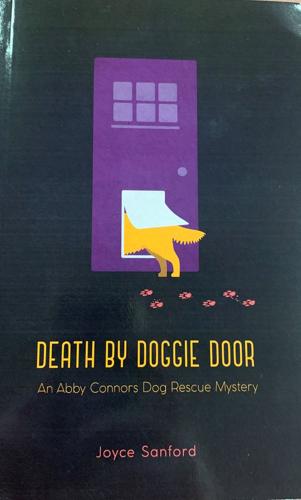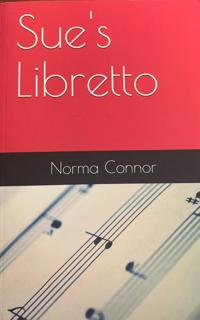“Sue’s Libretto” by Norma Connor
Amazon Books, $12.95 paperback; $7.99 e-book
The ideal smacks up against the real in this new novel by Norma Connor. When opera lover Sue meets and marries Vic, a handsome Army-black-ops officer, she imagines a life of music and love with a hero — like Mimi and Rodolfo, in “La Bohème” perhaps. But it’s not 19th-century Paris; it’s 2007 Chicago, and the U.S. is deep in the Iraq War. The reality is that marriage to a special-ops man on secret assignment engenders loneliness, estrangement and anxiety. Another reality is that when dangerous operations go south, as one of Vic’s tragically does, it exacts a terrible emotional toll. PTSD could well bring the curtain down on their young marriage.
Connor, the wife of a Navy EOD (Explosives Ordnance Disposal) diver, has previously written nonfiction articles about her husband’s team operations. She presents convincing and suspenseful combat scenes and a credible military-spouse perspective in this engaging novel. And “Sue’s Libretto” is organized — why not? — in four acts, broken into scenes, opening with an overture and finishing with an encore.
— Christine Wald-Hopkins
“Tucson: A Drama in Time” by John Warnock
Wheatmark, $24.95
In 1885, Tucson’s first public park — Carrillo Gardens — opened. An 8-acre garden on south Main, it had peach trees, grape vines, quince, pomegranate and apricot trees. The founder’s sons, decked out as sailors, would row customers around “lakes” which were, in fact, ponds from natural springs. In addition to a shooting gallery, bath houses, saloon, restaurant, ice cream parlors, dance hall, zoo, and a circus, Carrillo Gardens had a racetrack on which monkeys rode ponies. So, which is more surprising — monkeys on ponies, or natural springs in Tucson?
In “Tucson: A Drama in Time,” retired University of Arizona English professor and Tucson native John Warnock paints a remarkably full picture of the history of the Old Pueblo. Writing that “stories are what make a location into a place,” Warnock presents stories from multiple strands — geologic, cultural, political, military, business, sports, educational — along with a thin thread of the personal. The volume of facts he offers about the city and its region seems encyclopedic — the period covered begins with the volcanic extrusion that produced Sentinel Peak 1 million years ago and closes in 2014 — but Warnock’s approach makes it very accessible. It’s chronological. The prose is spare and concise. It doesn’t privilege one category of history over another: Tucson’s first orchestra gets equal billing with Tucson’s first female lawyer, for example (both in 1896).
You can follow families’ rises and falls, trace the city’s ethnic makeup, watch the water level sink, find the origins of your own neighborhood, as development moved from land grants and homesteads to platted subdivisions. Photographs and period maps illustrate the city’s spread through the valley. That the final chapter is entitled “To be Continued” suggests we have some obligation to responsibly steward Tucson’s continued “drama.” To quote ex-Mayor Jonathan Rothschild, it’s a “must-read” for Tucsonans.
— Christine Wald-Hopkins
“Vision Quest” by Michael T. Mayo
Queens Army LLC, $19.95
“The Other is a luminous double of a sorcerer, which is indestructible and extremely powerful,” writes Michael T. Mayo. “It cannot be injured and cannot be killed. It is an extension of the sorcerer’s will. I am not only a dream walker but also a powerful sorcerer who has created his own double, known as the Other.”
“Vision Quest” is Tucson dentist Mayo’s sixth publication of short writings that reflect what could be considered unusual personal experiences — time travel, channeling the dead, wizardry training. This collection of experiences has a Native American thread. A Plains Indian appears to Mayo at the foot of Baboquivari Peak, and Mayo releases an Indian princess trapped in an ancient pot he saved from the trash. An Inca virgin waiting to be sacrificed shows up near Mayo’s son’s pool house in Orange County. These visions apparently contributed to Mayo’s personal quest to “reach Quantum Space, where nothing exists but infinite energy and infinite possibilities.”
— Christine Wald-Hopkins
“Believing Is Seeing: Shared Experiences in Poetry and Art” by Dave Burns and Ned Mackey
Wheatmark, $28.95
The nexus of visual art and the written word is the essence of this engaging volume of ekphrastic poetry. Simply put, an ekphrastic poem is a vivid description inspired by a work of art (think Keats’ “Ode on a Grecian Urn”). In this collaboration, poet Ned Mackey responds, in verse, to paintings by artist Dave Burns, and the result is a sublime contemplation on the visual landscape that enhances the reader’s experience by providing multiple levels upon which to reflect — a unique way of seeing, as the title implies. The paintings, primarily scenes of the natural world, have a lovely, dreamy quality — the red rocks of Sedona, a red-tailed hawk in flight, a solitary fisherman in a Yellowstone river — that is brought into focus by accompanying poems that describe, imagine and suggest a narrative. Burns and Mackey footnote each offering with their personal takes on their motivations and inspirations, occasionally expressing delighted surprise at the other’s perceptions.
There’s remarkable harmony here, but that isn’t surprising. Burns, who took up painting full time when he retired from a career in architecture, and Mackey, who taught English in Tucson high schools for 36 years, sang together in the Sons of Orpheus Male Choir of Tucson. Sharing art is a thing they do well.
— Helene Woodhams
“The Bramble Tree” by Randy Lee Purdy
Christian Faith Publishing, Inc., $13.95; $9.99 Kindle
Family values and respect for all God’s creatures lie at the heart of this inspirational novel. Jacob Bramble was loving life on his grandfather’s Texas ranch until he sustained the one-two punch of losing his beloved father, followed by the theft of the orphaned Brahman bull he and his dad had raised together from its birth. To honor the memory of his late parent, the high-achieving 18-year-old puts college on hold in favor of recovering the missing bull, and in the process becomes a nationally recognized, prize-winning rodeo star.
Although his hunt is bedeviled by pitfalls and bad actors — including his coldhearted, sociopathic mother — Jacob is supported by the love of his extended family and friends, and grounded by his deeply held faith. And faith, suggests author Randy Lee Purdy, can move mountains. Purdy, who lives in Tucson, has been writing for 25 years.
— Helene Woodhams
“Confessions of an Investigative Reporter” by Matthew Schwartz
Koehler Books. Hardcover $27.95; paperback $18.95; Kindle $7.49
Matthew Schwartz is no stranger to consumers of Tucson news; the veteran journalist spent seven years reporting for KVOA, the local NBC television affiliate, before retiring in June. During a career spanning four decades, Schwartz, who lives in Oro Valley, worked at seven stations in six cities — half of that time in New York — and reported on more than 10,000 stories. In this memoir he recounts several of his favorite investigations, providing eye-opening background information.
“Investigation” is the operative word here — Schwartz didn’t make his name as a ‘crime du jour’ reporter; he instead preferred putting in the time and the shoe leather to dig deep, nail down facts, and produce stories that helped people. Dishonest contractors, “pill mill” doctors, corrupt judges, VA scams — all were grist for his mill, and he broke many stories that gained national attention. This is an unflinchingly honest account of an award-winning career: Schwartz is completely transparent about personal missteps, as well as certain practices of news organizations that value ratings over integrity. In a business known for burnout, Schwartz considers himself a survivor, and the professionalism, good humor, and community concern he displays in this interesting book might account for his staying power. With fake news assailing us at lightning speed, it’s refreshing to be reminded about the critical importance of good journalism.
— Helene Woodhams
“Death by Doggie Door: An Abby Connors Dog Rescue Mystery” by Joyce Sanford
Outskirts Press, Inc., $14.95; $8.99 Kindle
It’s a dog’s life for Abby Connors, and that’s how she likes it. A volunteer for a Tucson-based animal rescue group, Abby spends her days happily ministering to homeless golden retrievers with a single-minded devotion rivaling that of her good-natured canine charges. But things take a sinister turn when, arriving to do a welfare check on a dog, Abby discovers a body, bludgeoned to death and wedged in the doggie door. The identity of the intruder is unknown, and there are no suspects, with the exception of Abby, who finds herself uncomfortably positioned between an overzealous rookie cop and a crazed serial murderer.
In a race against time that catapults her from Tucson’s tony northern suburbs to the unforgiving deserts of the Tohono O’odham Nation, Abby demonstrates that her talent for heroic rescue extends beyond big fluffy dogs. Of particular interest for animal lovers is the behind-the-scenes look at the dedication with which rescue organizations operate. It’s a familiar subject for the author of this very readable debut novel — Joyce Sanford is currently president of Southern Arizona Golden Retriever Rescue.
— Helene Woodhams


